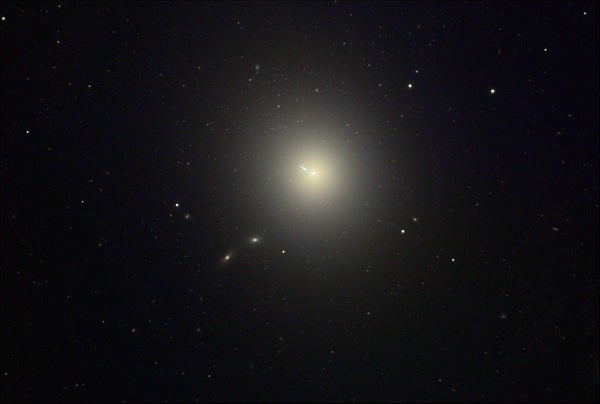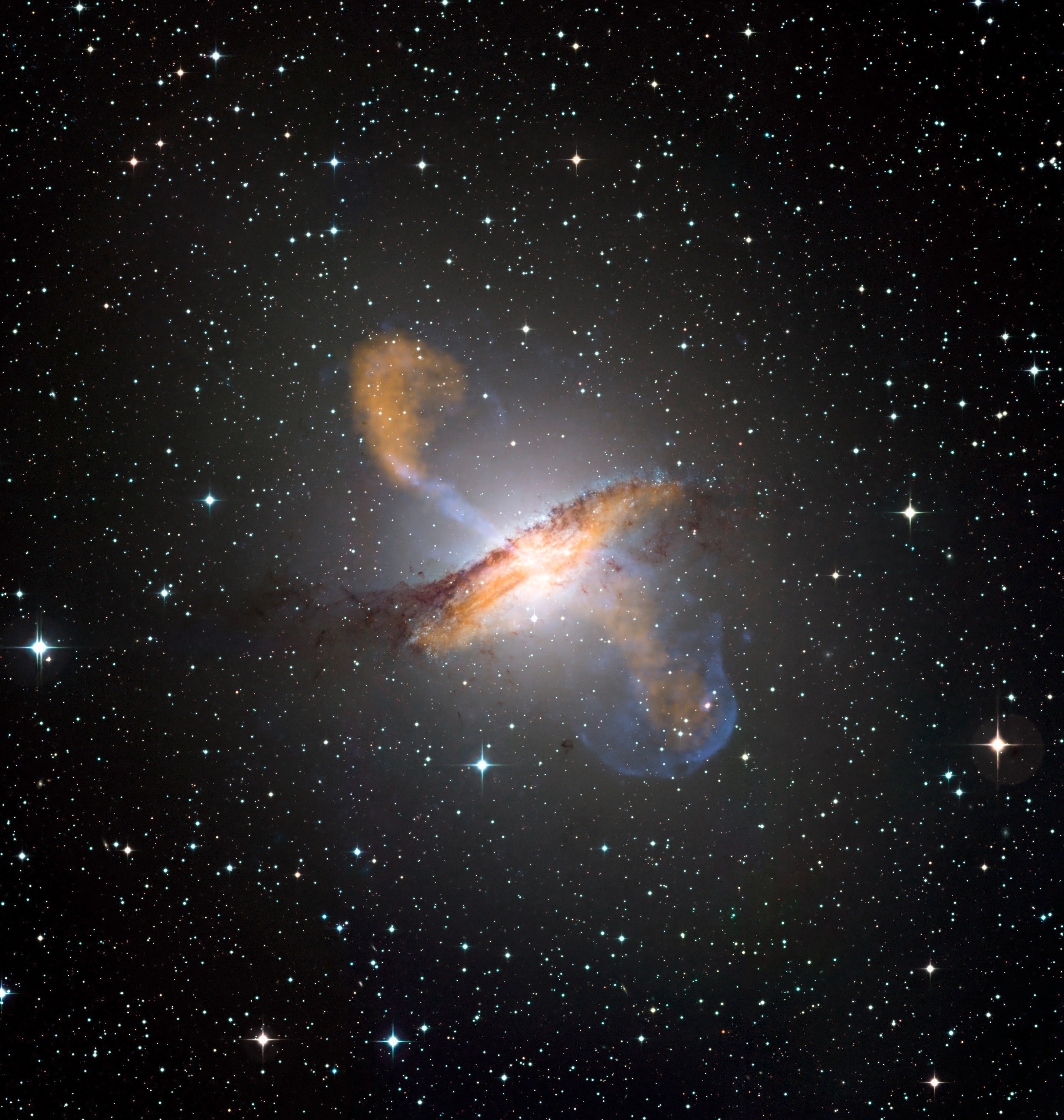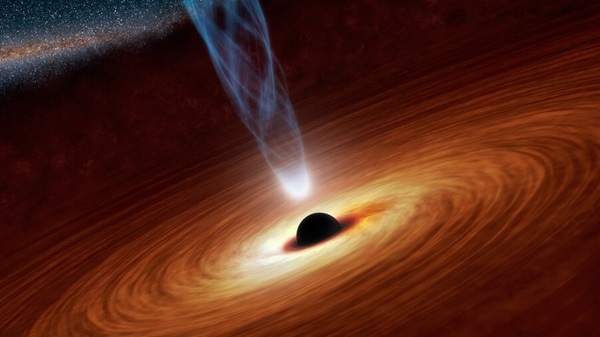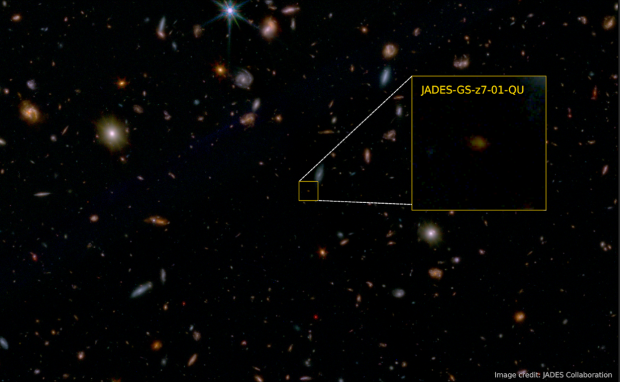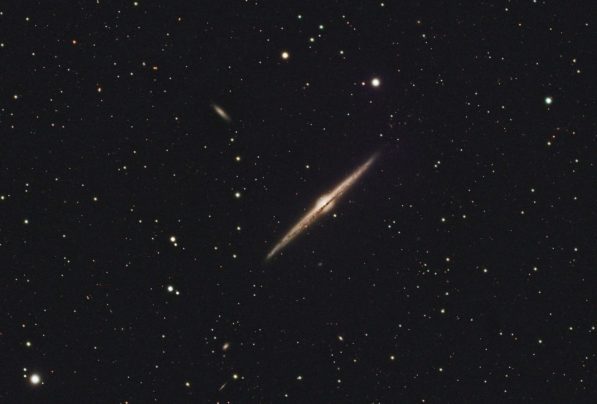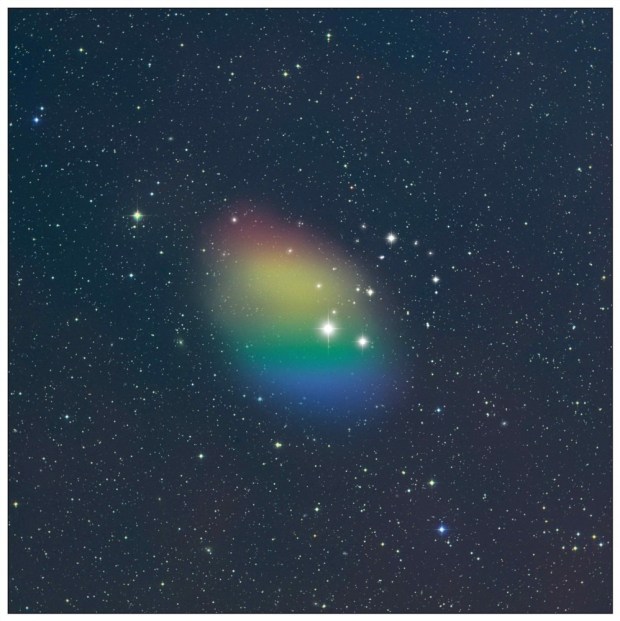M87 is yet another Messier elliptical galaxy in the Virgo Cluster, 55 million light-years distant and some 120,000 light-years across. It lies about 3½° northwest of Rho Virginis. But M87 outdoes M84 and M86 in sheer mass: It has least a trillion stars totaling a mass of 2.7 trillion Suns. That makes it one of largest, most massive, and most luminous galaxies in our local universe.
Charles Messier discovered M87 on March 18, 1781 — the same night he found M84 and M86 — and one can only wonder what went through his mind as he spotted these three cometlike objects in the same area of sky. At magnitude 8.6, M87 is slightly brighter than the other two and in between them in size.
M87 is most likely the visible remains of an extragalactic merger between two galaxies. This combined cosmic powerhouse now features a furious jet of matter blasting out from its nucleus. Heber Curtis at Lick Observatory first noticed this “curious straight ray” in 1918 on photographic plates. The jet is a very strong central radio source and is powered by a 6.5-billion-solar-mass black hole — one of the largest known. In 2017, astronomers used an international network of radio telescopes called the Event Horizon Telescope to zoom in on the heart of M87 and capture the first image of a black hole and its shadow, which was released in April 2019.
The first visual observation of M87’s 5,000-light-year-long jet was made by Otto Struve through the 100-inch telescope at Mount Wilson. It was thought to be beyond the grasp of amateur astronomers until the late Barbara Wilson first sighted it through her 20-inch reflector during the 1991 Texas Star Party. Otherwise, the galaxy is quite typical for an elliptical. Namely, it resembles an unresolved globular cluster or the head of a comet just beginning to shine — one with a bright spherical shell that gradually condenses inward. A dimmer elliptical, 11th-magnitude NGC 4478, lies only 10′ southwest of M87; it requires modest to high magnifications to see well.
Make sure to explore Astronomy’s full list of 101 cosmic objects you must see. New entries will be added each week throughout 2022.
To get the latest astronomical news and observing content delivered directly to your door, subscribe to Astronomy magazine today!

